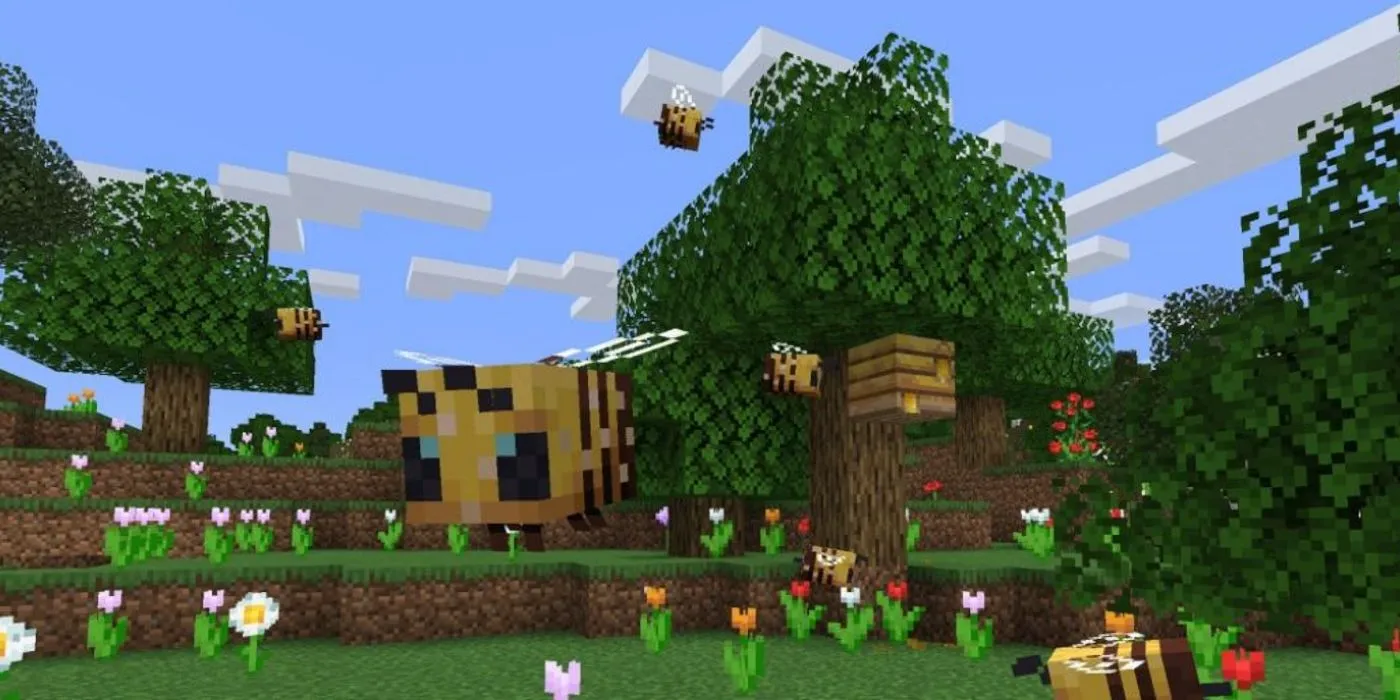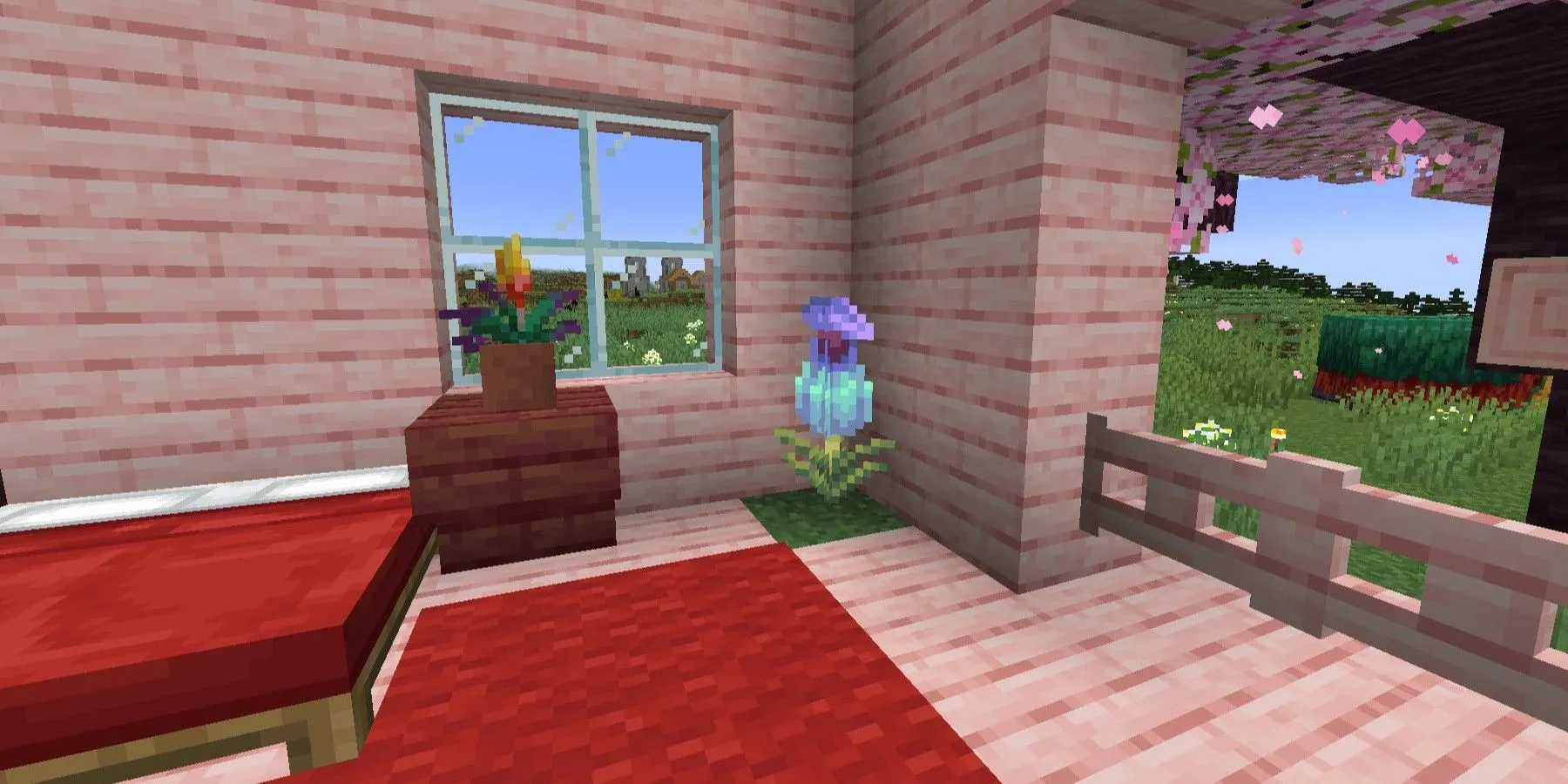
Within the diverse biomes and expansive landscapes of Minecraft, players encounter an array of plant life ranging from ubiquitous oak trees to elusive sweet berry bushes. These plants serve practical purposes, providing players with essential resources for construction, sustenance, and decorative elements. Among these, flowers typically have limited functionality. Though they can be crafted into dyes or used to attract bees for honey production, many players often overlook flowers in favor of more practical options. However, the introduction of a new flower, the eyeblossom, may herald a shift in how flora is perceived in Minecraft.
The Eyeblossoms of the Pale Garden





In late 2024, Mojang unveiled a new biome named the Pale Garden during the Minecraft LIVE 2024 event. This unique world features dense forests characterized by dark gray pale oak trees and hanging moss, creating a haunting and eerie atmosphere devoid of animal mobs—only formidable monsters roam here. One notable denizen of this biome is the Creaking, a tree-like guardian that only strikes when a player isn’t facing it, adding an element of suspense to exploration. The Pale Garden boasts a range of new materials such as resin clumps and creaking hearts, but the standout feature is undoubtedly the eyeblossom flower.
Exclusively thriving in the Pale Garden, eyeblossoms are small, subtly camouflaged flowers that blend effortlessly with their environment. By day, their gray coloration may go unnoticed, but at night, these flowers bloom into a vibrant orange star shape, echoing the bright eyes of the Creaking. The clever design ensures that players remain vigilant, as eyeblossoms emit delicate sounds when placed on moss blocks and react dynamically to nearby relatives, opening in unison. Beyond their aesthetic appeal, eyeblossoms can be used to create orange and gray dyes, craft questionable stews, and even intoxicate bees.
The New Flower Update in Minecraft





Currently, Minecraft offers players the ability to collect and cultivate 20 different types of flowers, including:
- Alliums
- Azure Bluets
- Blue Orchids
- Cornflowers
- Dandelions
- Eyeblossoms
- Lilacs
- Lilies of the Valley
- Orange Tulips
- Oxeye Daisies
- Peonies
- Pink Tulips
- Pitcher Plants
- Poppies
- Red Tulips
- Rose Bushes
- Sunflowers
- Torchflowers
- White Tulips
- Wither Roses
Given the capabilities of eyeblossoms, it would be prudent for Mojang to consider introducing additional flowering plants with similar attributes or to enhance existing flowers with new functionalities. In particular, two plants that warrant an upgrade are the torchflower and pitcher plant, both of which are notoriously hard to obtain. Found mainly through Sniffers, who can locate their seeds in suspicious sands of warm ocean ruins, these plants have limited uses despite their rarity.
While pitcher plants can produce cyan dye and enhance the chances of beehives generating with bee nests, their overall utility remains low. Torchflowers, on the other hand, are useful for making orange dye, crafting suspicious stews that grant brief night vision, and breeding Sniffers. Given their elusive nature, players have expressed disappointment over their lack of functionality. Introducing new abilities—such as having pitcher plants collect rainwater or torchflowers emitting light—would significantly enhance their value and usability.
Prospective Additions to Minecraft’s Flora
Moreover, Mojang might consider incorporating new flowering plants with unique attributes that align with the creativity exhibited in eyeblossoms. A compelling candidate for such an addition could be the Venus flytrap, known for its remarkable insect-trapping mechanism but also capable of producing small white flowers. These plants naturally inhabit the pine savannas of North and South Carolina and could be included in existing biomes such as old-growth pine taiga or dark forests. The inclusion of Venus flytraps could introduce engaging gameplay mechanics, acting as stationary obstacles that attempt to snare nearby mobs.
Innovative flowering plants like eyeblossoms and Venus flytraps could exponentially enrich the exploration experience across Minecraft‘s diverse landscapes, encouraging players to engage more deeply with the game’s botany.




Leave a Reply ▼